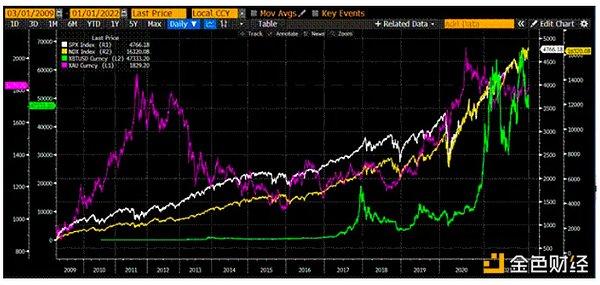B2B payment systems are often viewed as simply pressing a “send” button to transfer funds from one entity to another. With this perspective, many stablecoin projects focus on improving transaction channels — such as checks, wires, or digital transfers — while ignoring the critical, domain-specific processes before and after the transfer. In fact:
B2B payments are the culmination of an extensive workflow, most of which focuses on document verification, compliance or regulatory steps, and approvals from multiple parties before funds can be transferred.
This gap between the notion that “we just need to pay someone” and the reality that we must first finalize multiple contractual and operational details becomes particularly acute in cross-border transactions, where unique legal frameworks, local tax regulations, and exchange rate fluctuations add to operational complexity. In fact, the growing relevance of digital assets — especially stablecoins (e.g. @hadickM) — has begun to intersect with these workflows, providing a potentially streamlined path for capital movement if combined with strong workflow automation.
This article attempts to argue that the introduction of stablecoins should not be viewed simply as an efficiency gain at the “payment execution” level; rather, it must be integrated into a workflow-centric solution to unlock the trillion-dollar opportunity according to @PanteraCapital. I think the most valuable layer in the stablecoin payments stack is the orchestration layer, which, as @robbiepetersen_ said, can simplify complex workflows and cover as many regions as possible.
The Hierarchy of Needs for B2B Payments
A useful conceptual tool is to think of B2B payments as a layered “hierarchy of needs.” These levels include:
- Data collection and invoice management
B2B transactions often involve gathering supplier information, parsing invoices, and reconciling them with purchase orders or delivery records. - Compliance and regulatory checks Companies must verify that suppliers comply with local or international regulations, including KYC (know your customer) and AML (anti-money laundering) requirements.
- Tax Reconciliation Determining the correct local and cross-border tax obligations – such as withholding tax or VAT – can be complex, especially when shipping goods across borders.
- Approvals and Audits Many organizations require multi-level approval chains. Audit trails and instant visibility of approvals further complicate workflow.
- The final transfer of payment execution funds – traditionally via check, ACH, wire transfer or other channels – sits atop this structure.

By recognizing that payment execution depends on the layers beneath it, solution providers can design comprehensive systems that address all stages, thereby avoiding failures or delays caused by insufficient documentation tracking, non-compliance or an incomplete approval chain.
Cross-border payments workflow: some real bottlenecks
Cross-border B2B payments amplify the challenges in the domestic payment environment:
1. Regulatory Complexity Each jurisdiction has unique requirements for foreign exchange transactions, not only regarding AML/KYC, but also often requires specific documentation related to trade laws and customs.
2. Detailed tax obligations From import duties to VAT, cross-border transactions require precise tracking and sometimes the allocation of tax responsibilities to multiple parties in different regions.
3. Extended approval levels Subsidiaries and parent companies often have complex sign-off procedures. Any mismatch in local compliance, product classification or documentation may prevent payments from being processed in a timely manner.
In many cases, these complexities are a greater barrier to timely and accurate payments than the friction of the payment channels themselves.
Industry Example Description
Freight and Logistics: Freight Auditing and More
Background: In freight and logistics, multiple carriers charge transportation, handling, surcharges, and even penalties for early/late arrivals. Fuel costs fluctuate, and complex multi-leg shipping arrangements can result in very complex invoices.
Workflow pain points: The core challenge is not pressing the “pay the trucking company” button, but how to reliably match these charges to the agreement, verify that the weight of the goods and the transportation distance are calculated correctly, and account for potential exceptions.
Why it matters: B2B payment solutions that focus solely on seamless payment interfaces miss the larger issue of validating invoice details — an area that is often still managed by large teams or outsourced business process outsourcing (BPO) companies. A better approach is to integrate with shipping profiles to track changes to schedules or shipments and detect invoice errors before payment is made.
Real-world example: Loop focused on auditing and workflow logic first, then added payment capabilities. Another example might be an AI solution that automatically scans and parses shipping dossiers, pushes exceptions into a queue, and only then unlocks the payment mechanism.
Construction and upstream supply chain
Background: Construction projects involve multiple layers of suppliers, from lumber and cement to electrical and mechanical subsystems. The tax burden varies by region and type of project.
Workflow pain point: Not only does the contractor need to pay for “50 cubic yards of concrete,” he also needs to confirm that the purchase is related to a specific project or permit, apply the correct local taxes, and confirm that the purchase was authorized under the correct work code.
Why it matters: Tools that simply speed up transactions — without capturing or automating these approvals — don’t solve the larger problem. B2B solutions that automate these inspections, integrate with building permits, coordinate with subcontractor budgets, and streamline part deliveries can deliver more lasting value to end users.
Real World Example: Nickel integrates with a tax calculation engine to manage the complexity of different tax rates for the same item, depending on usage, buyer classification, and location. Other suppliers may embed material usage forms and generate compliance profiles before any payments are triggered.
Fuel Card and Spending Management
Background: Managing a fleet of trucks, cars, units or company vehicles involves controlling a significant amount of operating expenses.
Workflow Pain Points: Fuel is an obvious expense, but it’s just as easy for drivers to spend money on non-category items (such as snacks, personal fuel, or items not approved by the company). Therefore, control and visualization are more important than simply "paying for gas."
Why it matters: Tools like Wex, Fleetcor, Mudflap, AtoB and Coast effectively combine purchase transactions with real-time policy controls, allowing supervisors to see if drivers are purchasing items that are not relevant to the fleet -- and optimize for choosing cheaper gas stations.
Real-world example: A solution might integrate in-vehicle communications and route optimization software to detect anomalies in mileage or fuel consumption, flag suspicious purchases, and only allow transactions to flow after relevant approvals or checks have been passed.
Supplier management and invoice approval
Background: A large company may have thousands of suppliers, with invoices in a variety of formats - some digital, some PDF, and even some paper.
Workflow pain point: Accounts payable teams must ensure that every invoice is valid, has no duplicates, is assigned to the correct budget code, and complies with relevant vendor agreements.
Why it matters: The “Payment” step is probably the easiest part — just write a check or send an ACH. But verifying that a $3500 invoice is correct, or that a $100 invoice was overcharged, consumes a lot of manual work.
Real-world example: Solutions like Tipalti, Coupa or SAP Concur embed invoice receiving, expense management and supplier onboarding processes. They transform chaotic data into standardized entries, allow for multiple levels of approval, and handle the required currency conversions, only then triggering the release of funds.
Sales commissions for SaaS platforms
Background: SaaS companies often set up complex commission structures for sales teams, with different percentages and bonuses applying depending on product type, region, or subscription level.
Workflow pain point: Calculating and verifying each commission can be more complex than paying a salesperson a bonus check. Differences lead to disputes and dissatisfaction.
Why it matters: Automating a correct and transparent commission structure requires a robust system that integrates with CRM data, tracks subscription usage or extension packages, and takes into account distribution among multiple sales reps.
Real world example: Platforms like CaptivateIQ or Spiff focus on solving the data and workflow problems of commission calculation. Before payment is ready, the system has already optimized a large amount of information and automatically handles special cases, eliminating error-prone spreadsheets.
Integrate stablecoin payments into workflows to improve efficiency
While traditional payment methods (e.g., checks, ACH, SWIFT) can be slow and expensive, especially in cross-border payments, stablecoins have emerged as a powerful alternative for settling digital payments. Here are some key considerations (as mentioned by @proofofnathan):
Reduced Settlement Times Stablecoins can provide almost instant settlement, bypassing the multiple intermediary banks typically involved in cross-border remittances. This feature is particularly helpful in preventing unnecessary payment delays when the workflow has ensured that all operational conditions have been met and approvals are complete.
Automated Compliance Checks Workflow platforms that integrate stablecoin transfers can be designed to initiate on-chain payments only when specific smart contract conditions are met — such as supplier identity confirmation, compliance file cleanup, or proof of delivery. This automated compliance process reduces manual intervention and errors.
Transparent FX Management In many stablecoin arrangements, assets are often pegged to a major currency, such as the U.S. dollar, reducing the impact of exchange rate fluctuations. This transparency can simplify payment reconciliation and accounting. Additionally, integrating stablecoin payment channels with advanced workflows can automatically convert stablecoins into local currencies for use by the end recipient, reducing the complexity of manual financial management.
Micro-transaction cost savings If B2B transactions involve small, recurring payments across borders — such as paying micro-invoices to overseas contractors — stablecoins can reduce fixed transaction fees. Workflow-based approaches can bundle or schedule these payments to optimize gas fees or network costs on certain blockchain infrastructures.
Expanding suite of value-added services Once companies integrate stablecoins into payment workflows, new opportunities become viable. For example, support for instant financing, instant invoice discounting or embedded dynamic discounting can all be encoded in the workflow. A stablecoin-based system could enable these functions to occur with as little friction as possible.
The benefits of a workflow-first strategy in cross-border payments
Improved transparency and auditability By emphasizing documented automated approvals, organizations ensure that every step, from KYC and AML checks to contract matching, can be thoroughly tracked. This process reduces disputes and compliance risks.
Minimize Human Touchpoints Human supervision at every stage can lead to delays and errors. Taking an end-to-end workflow approach — with the final stage potentially settled in stablecoins — automates and simplifies interactions, significantly reducing overall cycle time.
Scalable Suite Solutions for Global Expansion Companies that rely on ad hoc cross-border payment methods often have difficulty scaling suite businesses. In contrast, workflow platforms that integrate stablecoin payment channels and dynamic compliance management can enter new markets more quickly and at a lower cost.
Bundled value proposition Companies that simply provide “payment” functionality have limited differentiation. Those companies that can handle documentation, compliance burdens, and payment flows in a single, integrated platform will become indispensable partners to their clients, ensuring more stable, highly profitable commercial relationships.
in conclusion
While conventional wisdom views B2B payments primarily as a matter of efficient money transfer, the real barrier to cross-border payments efficiency lies in imperfect or incomplete workflows.
These limitations stem from fragmented data management, complex regulatory requirements, extended approval chains and uncertain tax obligations. While many stablecoin projects aim to improve existing payment rails, stablecoins alone cannot solve these multifaceted workflow problems.
While these stablecoin projects are positioning themselves as the payment execution layer, I believe the winners will be those that take a systemic, workflow-first mindset, solve these foundational problems, and enable faster, more transparent, and less error-prone global payments.
These projects require building powerful tools embedded in thoughtful automated processes to confirm supplier qualifications, reconcile invoices, manage taxes, and perform multi-level approvals.
The mega-scale opportunities are those projects that take a holistic approach — projects that optimize workflow orchestration and leverage the efficiencies of stablecoins. Not only do they enable faster and more cost-effective international payments, they also seamlessly integrate compliance, tax and documentation requirements.
Such synergies not only enhance everyday payment operations, but also enable the company to expand into emerging markets, launch new financial products, and create lasting competitive differentiation in the global B2B financial sector.







